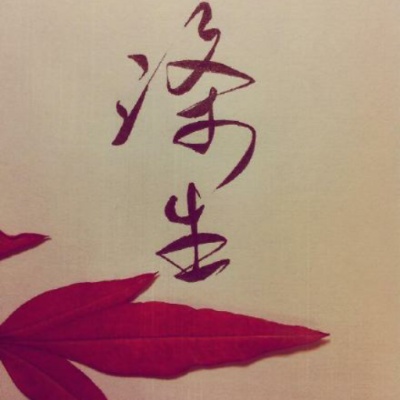介绍
System.gc(),大家应该也有所了解,是 JDK 提供的触发 Full GC 的一种方式,会触发 Full GC,其间会 stop the world,对业务影响较大,一般情况下不会直接使用。
那它是如何实现的呢? 另外有哪些参数可以进行优化呢? 我们带着问题来对相关源码解读一下。
实现
JDK实现
/**
* Runs the garbage collector.
* <p>
* Calling the <code>gc</code> method suggests that the Java Virtual
* Machine expend effort toward recycling unused objects in order to
* make the memory they currently occupy available for quick reuse.
* When control returns from the method call, the Java Virtual
* Machine has made a best effort to reclaim space from all discarded
* objects.
* <p>
* The call <code>System.gc()</code> is effectively equivalent to the
* call:
* <blockquote><pre>
* Runtime.getRuntime().gc()
* </pre></blockquote>
*
* @see java.lang.Runtime#gc()
*/
public static void gc() {
Runtime.getRuntime().gc();
}
其实就是调用了 Runtime 类的 gc 方法。
/**
* Runs the garbage collector.
* Calling this method suggests that the Java virtual machine expend
* effort toward recycling unused objects in order to make the memory
* they currently occupy available for quick reuse. When control
* returns from the method call, the virtual machine has made
* its best effort to recycle all discarded objects.
* <p>
* The name <code>gc</code> stands for "garbage
* collector". The virtual machine performs this recycling
* process automatically as needed, in a separate thread, even if the
* <code>gc</code> method is not invoked explicitly.
* <p>
* The method {@link System#gc()} is the conventional and convenient
* means of invoking this method.
*/
public native void gc();
Runtime 类的 gc 方法是个 native 方法,所以只能进入 JVM 代码去看其真正的实现了。
JVM实现
打开 openjdk 的源码,Runtime 类的 gc 方法在 Runtime.c 文件中有具体的实现
JNIEXPORT void JNICALL
Java_java_lang_Runtime_gc(JNIEnv *env, jobject this)
{
JVM_GC();
}
可以看到直接调用了 JVM_GC() 方法,这个方法的实现在 jvm.cpp 中
JVM_ENTRY_NO_ENV(void, JVM_GC(void))
JVMWrapper("JVM_GC");
if (!DisableExplicitGC) {
Universe::heap()->collect(GCCause::_java_lang_system_gc);
}
JVM_END
很明显最终调用的是 heap 的 collect 方法,gcCause 为 _java_lang_system_gc。这里有个注意点就是 DisableExplicitGC,如果是 true 就不会执行 collect 方法,也就是使得 System.gc() 无效,DisableExplicitGC 这个参数对应到的配置就是 -XX:+DisableExplicitGC,默认是 false,如果配置了,就是 true。
heap 有几种,具体是哪种 heap,需要看 gc 算法,如常用的 CMS GC 的对应的 heap 是 GenCollectedHeap,所以我们再看看 GenCollectedHeap.cpp 对应的 collect 方法
void GenCollectedHeap::collect(GCCause::Cause cause) {
if (should_do_concurrent_full_gc(cause)) {
#ifndef SERIALGC
// mostly concurrent full collection
collect_mostly_concurrent(cause);
#else // SERIALGC
ShouldNotReachHere();
#endif // SERIALGC
} else {
#ifdef ASSERT
if (cause == GCCause::_scavenge_alot) {
// minor collection only
collect(cause, 0);
} else {
// Stop-the-world full collection
collect(cause, n_gens() - 1);
}
#else
// Stop-the-world full collection
collect(cause, n_gens() - 1);
#endif
}
}
这个方法首先通过 should_do_concurrent_full_gc 方法判断是不是进行一次并发 Full GC,如果是则调用 collect_mostly_concurrent 方法,进行并发 Full GC;如果不是则一般会走到 collect(cause, n_gens() - 1) 这段逻辑,进行 Stop the world Full GC,我们就称之为一般 Full GC。
我们先看看 should_do_concurrent_full_gc 到底有哪些条件
bool GenCollectedHeap::should_do_concurrent_full_gc(GCCause::Cause cause) {
return UseConcMarkSweepGC &&
((cause == GCCause::_gc_locker && GCLockerInvokesConcurrent) ||
(cause == GCCause::_java_lang_system_gc && ExplicitGCInvokesConcurrent));
}
很明显如果是 CMS GC,则判断 GCCause,如果是 _java_lang_system_gc 并且 ExplicitGCInvokesConcurrent 为 true 则返回 true,这里又引出了另一个参数 ExplicitGCInvokesConcurrent,如果配置了 -XX:+ExplicitGCInvokesConcurrent,则返回 true,进行并行 Full GC,默认为 false。
并发 Full GC
我们接着先来看 collect_mostly_concurrent,是如何进行并行 Full GC。
void GenCollectedHeap::collect_mostly_concurrent(GCCause::Cause cause) {
assert(!Heap_lock->owned_by_self(), "Should not own Heap_lock");
MutexLocker ml(Heap_lock);
// Read the GC counts while holding the Heap_lock
unsigned int full_gc_count_before = total_full_collections();
unsigned int gc_count_before = total_collections();
{
MutexUnlocker mu(Heap_lock);
VM_GenCollectFullConcurrent op(gc_count_before, full_gc_count_before, cause);
VMThread::execute(&op);
}
}
最终通过 VMThread 来进行 VM_GenCollectFullConcurrent 中的 void VM_GenCollectFullConcurrent::doit() 方法来进行回收,这里代码有点多就不展开了,这里最终执行了一次 Young GC 来回收 Young Gen,另外执行了下面这个方法
void CMSCollector::request_full_gc(unsigned int full_gc_count, GCCause::Cause cause) {
GenCollectedHeap* gch = GenCollectedHeap::heap();
unsigned int gc_count = gch->total_full_collections();
if (gc_count == full_gc_count) {
MutexLockerEx y(CGC_lock, Mutex::_no_safepoint_check_flag);
_full_gc_requested = true;
_full_gc_cause = cause;
CGC_lock->notify(); // nudge CMS thread
} else {
assert(gc_count > full_gc_count, "Error: causal loop");
}
}
这里主要看 _full_gc_requested 设置成 true 以及唤醒 CMS background 回收线程。 大家可能了解过 CMS GC 有个后台线程一直在扫描,是否进行一次 CMS GC,这个线程默认 2s 进行一次扫描,其中有个判断条件 _full_gc_requested 是否为 true,如果为 true,进行一次 CMS GC,对 Old Gen 和 Perm Gen 进行一次回收。
一般 Full GC
一般的 Full GC 会走下面逻辑
void GenCollectedHeap::collect_locked(GCCause::Cause cause, int max_level) {
if (_preloading_shared_classes) {
report_out_of_shared_space(SharedPermGen);
}
// Read the GC count while holding the Heap_lock
unsigned int gc_count_before = total_collections();
unsigned int full_gc_count_before = total_full_collections();
{
MutexUnlocker mu(Heap_lock); // give up heap lock, execute gets it back
VM_GenCollectFull op(gc_count_before, full_gc_count_before,
cause, max_level);
VMThread::execute(&op);
}
}
通过 VMThread 来调用 VM_GenCollectFull 中的 void VM_GenCollectFull::doit() 方法来进行回收。
void VM_GenCollectFull::doit() {
SvcGCMarker sgcm(SvcGCMarker::FULL);
GenCollectedHeap* gch = GenCollectedHeap::heap();
GCCauseSetter gccs(gch, _gc_cause);
gch->do_full_collection(gch->must_clear_all_soft_refs(), _max_level);
}
这里最终会通过 GenCollectedHeap 的 do_full_collection 方法进行一次 Full GC,会回收 Young、Old、Perm 区,并且即使 Old Gen 使用的是 CMS GC,也会对 Old Gen 进行 compact,也就是 MSC,标记-清除-压缩。
总结
System.gc() 会触发 Full GC,可以通过 -XX:+DisableExplicitGC 参数屏蔽 System.gc(),在使用 CMS GC 的前提下,也可以使用 -XX:+ExplicitGCInvokesConcurrent 参数来进行并行 Full GC,提升性能。 不过,一般不推荐使用 System.gc(),因为 Full GC 耗时比较长,对应用影响较大,如前段时间的一个案例:依赖包滥用 System.gc() 导致的频繁 Full GC。 并且也不建议设置 -XX:+DisableExplicitGC,特别是在有使用堆外内存的情况下,如果堆外内存申请不到足够的空间,jdk 会触发一次 System.gc(),来进行回收,如果屏蔽了,最后一根救命稻草也就失效了,自然就 OOM了。
涤生的博客。
转载请注明原创出处,谢谢!
欢迎关注我的微信公众号:「涤生的博客」,获取更多技术分享。


Share this post
Twitter
Google+
Facebook
Reddit
LinkedIn
StumbleUpon
Pinterest
Email